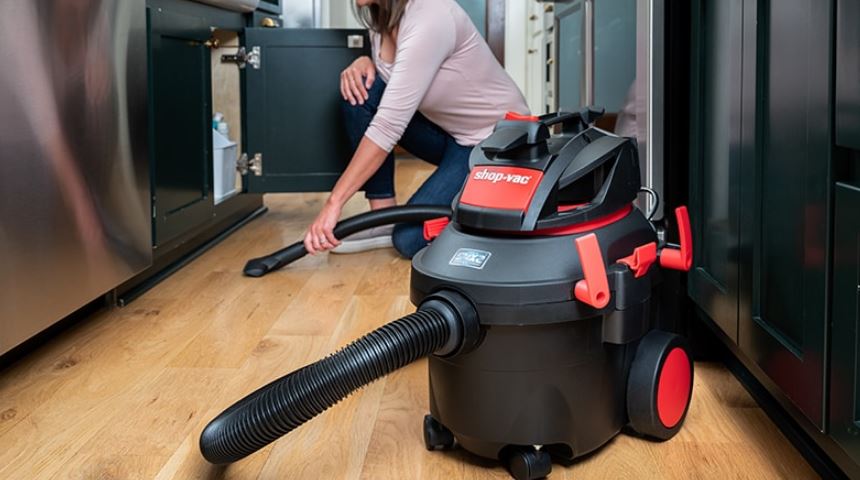Are you having a lot of water problems in your house? A Shop Vac can quickly clean up the debris if your utility sink is flooded or the cellar is flooded after a particularly hard downpour. Your vacuum will remain in peak condition for many years if you use the proper tools and filters. In this article, we’ll demonstrate how to use a shop vac to remove water or other fluid spills.

How to Use a Shop Vac for Water?
You should use the machine on a grounded GFCI socket. Install a three-prong cord with the same amperage rating as the shop vacuum.
Remove the bag
Wet/dry vacuums rarely utilize collecting bags when operating in the wet. The vacuum’s upper blower unit portion should be unlatched. The collection sack and other fasteners should be taken off and put aside.
Modify or remove the filters.
Dry filters are not utilized during moist operation because they are paper-based. They may be plastic containers with attached paper pleats. Alternatively, they could be rubber-banded filter cloths around the filter assembly.
Set up the appropriate attachment.
Probably, your shop vac arrived with a variety of accessories. Opt for the broad, T-shaped connector for flat flooring. This one is the greatest attachment for eliminating water from every kind of flooring. One can even add rubber squeegees into floor attachments to boost their efficiency.
You can use the crevice tool for car flooring, confined areas, and gaps. A portable wet vac designed especially for certain situations is another option.
Connect to GFCI Outlet
You should connect the vacuum to a GFCI socket since sucking water combines water and electricity. Most wet/dry vacuum cleaners are double-insulated, so if you choose, you may connect them to outlets without GFCI protection.
Let the shop vac do the work.
Quickly moving the attachment over the ground will spread droplets. This can make the cleaning process difficult. Rather, keep the nozzle stationary until it has absorbed most of the water in the vicinity. Then proceed to another location and repeat.
Use the same strategy but on smaller areas on carpets and other surfaces that require a crevice tool. Work in small spaces, giving the vacuum a few minutes to settle before moving it to a different position.
Discard Debris
Discard the vacuum bag. Remove any significant debris before dumping the water.
Safe Water Disposal
Put the water in a designated disposal spot. Avoid pouring water into garden beds.
Sterilize and clean the canister and its accessories.
Vacuums have a high chance of mold and mildew formation inside the canister after usage since they combine water with microbes.
When to Contact a Specialist?
Many shop vacuums have a 10 to 20-gallon water removal capacity per basin. This typically isn’t enough to quickly rescue building materials from flooded dwellings. Contact a water damage repair business instead. They have years of experience and can help you with flooded areas.
Conclusion
A shop vacuum is a simple, time-saving device necessary in every home. However, care should be taken to keep it out of kids’ reach. You should take all the precautions while using one to prevent any accidents. We hope that this post is useful for you.
